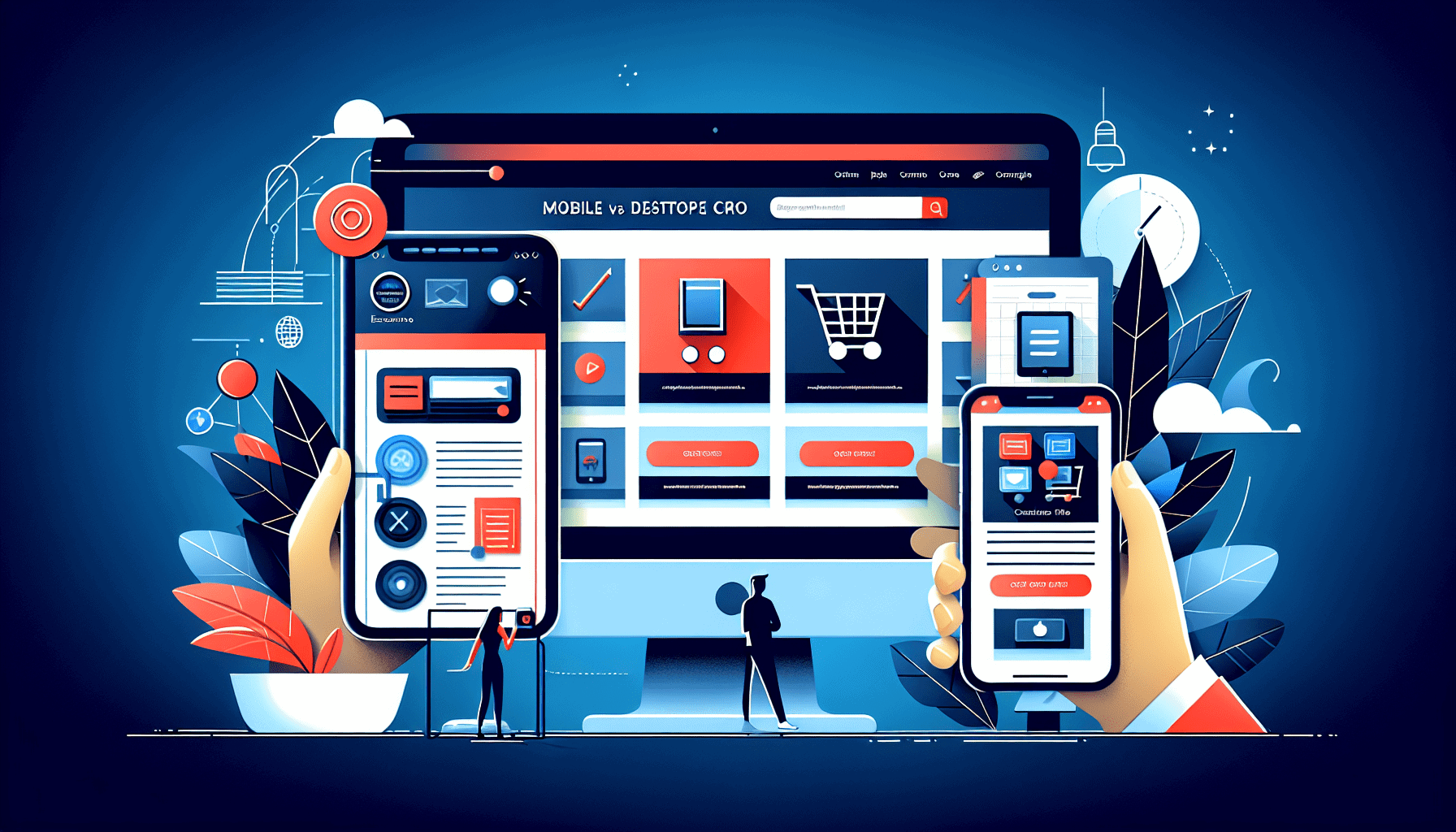In the era of omnipresent smartphones and tablets, mobile shopping has become a new normal. According to Statista, by the end of 2023, 62% of e-commerce sales will occur on a mobile device, with a worth of $2.2 trillion. Despite this trend, desktop users continue to convert at a higher rate, demonstrating the need for a separate, nuanced approach to Conversion Rate Optimization (CRO) for mobile and desktop users. This article will delve into the key differences between mobile and desktop CRO and provide some actionable strategies for both.
Mobile CRO: Convenience at the Core
Mobile devices provide a unique shopping experience characterized by convenience and speed. However, smaller screens and touchscreen interfaces present distinct challenges for CROs.
- Simplified Navigation and Design: Due to limited screen real estate, e-commerce sites must prioritize essential elements and eliminate distractions on mobile. Implement hamburger menus and prioritize vertical scrolling over horizontal to make navigation straightforward.
- Optimized Checkout Process: Baymard Institute reports that mobile checkout forms should only have up to 12 form fields to avoid cart abandonment. Streamline the process further by implementing single-click ordering, digital wallets, and guest checkout options.
- Mobile-Friendly Content: Use compressed images and concise text, ensuring your content loads quickly and reads easily on smaller screens.
- AMP (Accelerated Mobile Pages): AMPs can significantly speed up page load times, which is crucial given that a 100-millisecond delay in load time can decrease conversion rates by 7%, according to a study by Google.
Desktop CRO: Maximizing Screen Real Estate
Despite the rise of mobile, desktop shopping remains relevant, especially for high-commitment purchases. Desktop users typically spend more time browsing, and the larger screen real estate offers opportunities for enhanced product visualization and more detailed information.
- Detailed Product Descriptions and High-Quality Images: Use the extra space to provide comprehensive product details and multiple high-resolution images. 3D rendering and videos can also be advantageous here.
- Advanced Search and Filter Options: Desktop users are more likely to use these features, which can help them find the exact product they want more efficiently.
- Cross-Selling and Upselling: You can use more screen space to show related products or premium versions, prompting customers to spend more.
- Persistent Shopping Cart: A visible shopping cart that keeps track of added items can reassure the users about their intended purchases and reduce the likelihood of cart abandonment.
The Convergence of Mobile and Desktop CRO
While it’s important to tailor your CRO strategies to mobile and desktop, some tactics are universally beneficial.
- Personalized User Experience: Personalize the shopping experience based on the user’s browsing history, preferences, and previous purchases. Personalization can increase conversion rates by as much as 8%, according to a study by SmarterHQ.
- Multichannel Optimization: Ensure a seamless shopping experience across all devices. Users often switch between devices during the shopping journey, so keep the experience consistent.
- Website Speed: Regardless of the device, website speed affects conversion rates. Invest in website optimization and high-quality hosting services.
Conclusion
In the mobile-dominated e-commerce landscape, businesses can’t afford to overlook desktop or mobile CRO. By understanding the unique behavior of mobile and desktop users and implementing device-specific strategies, businesses can maximize conversions and revenue across all channels.
